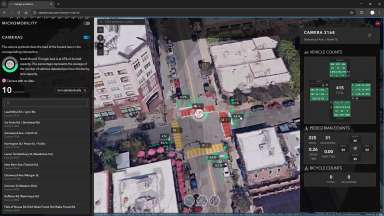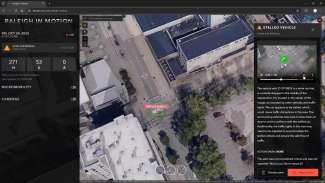Raleigh’s Smart Mobility Achievements
Developments that will be presented in the SmartCities conference include:
Dynamic Traffic Management
Raleigh uses continuous, around-the-clock data collection to:
- Inform signal timing
- Reduce congestion
- Improve safety for all road users
Data captured is not stored. It is used to create analytics, including trajectories of cars, pedestrians, and bicyclists.
Cross-Department Collaboration
The future goal of this project is to use real-time insights that can be shared across transportation and public safety teams.
Data-Driven Planning
Incorporating data from computer vision models into the City’s digital twin can provide a comprehensive view of urban mobility (how people move around the city). That can support proactive planning and rapid response. That can also enable coordinated responses and efficient resource allocation.

